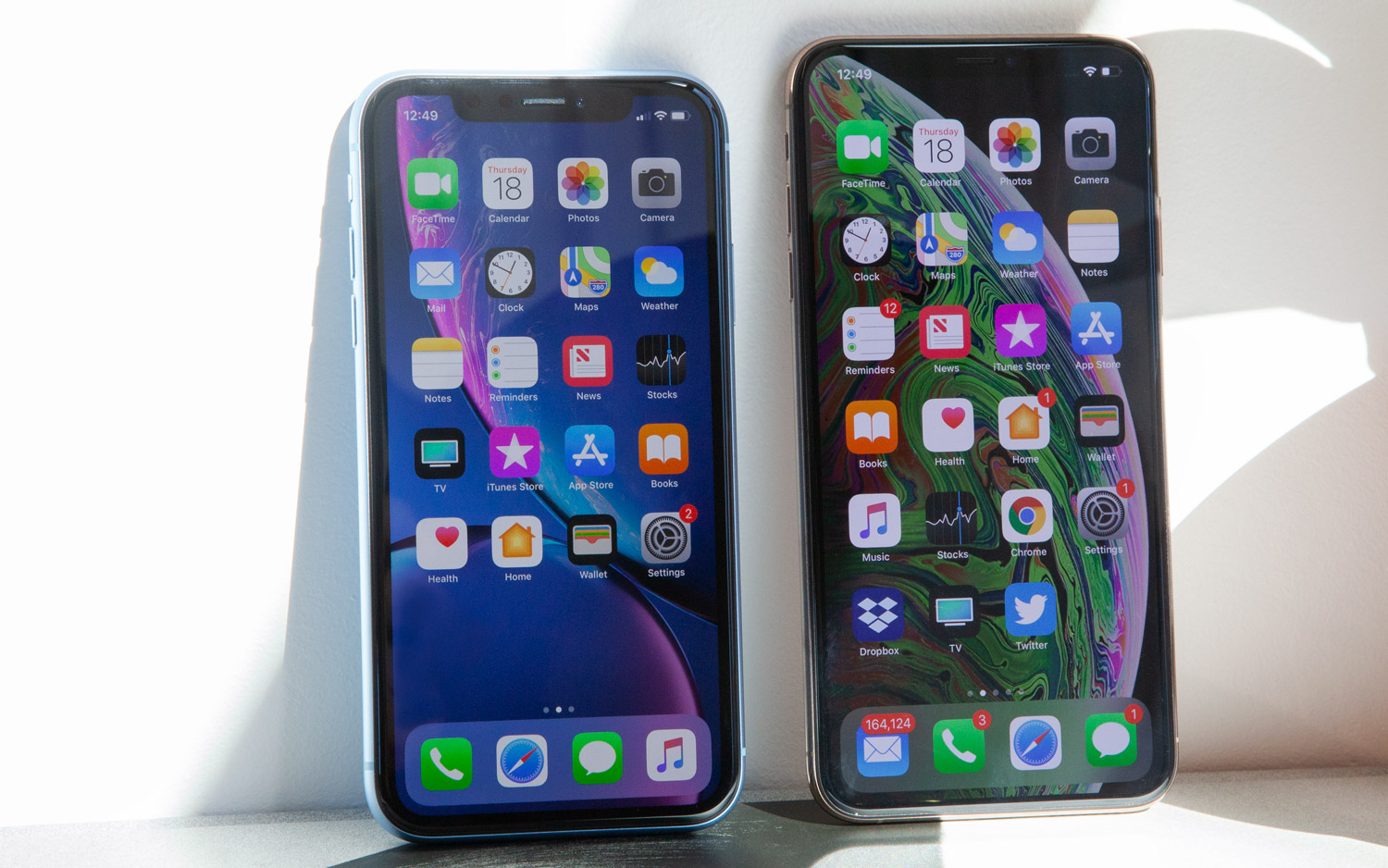Why Apple Should Make a Cheaper iPhone
Other phone makers have found success by coming out with lower-priced versions of their flagships. Why shouldn't Apple follow suit?

There's still another quarter to go, but Apple's 2019 fiscal year is not going to go down as The Year of Booming iPhone Sales. After reporting its third-quarter numbers this past week, Apple has seen revenue from its smartphone business drop 15% for its fiscal year to date, as the iPhone goes from the engine that drove Apple to just another product.
A lot of factors have contributed to the slower sales figures. People are holding on to their smartphones longer. Last fall's iPhone updates introduced only modest changes, and with the iPhone 11 not expected to reinvent the wheel either, anyone who can put off a smartphone upgrade is going to be inclined to wait for the more marquee features rumored for the 2020 model.
But there's another explanation for why the latest iPhones haven't caught on in quite the same way as their predecessors: Maybe they just cost too damn much.
The iPhone XS starts at $999, the same price Apple charged for 2017's iPhone X. The iPhone XS Max is the most expensive phone Apple's ever sold, with a starting price of $1,099. Even the iPhone XR — Apple's idea of a lower-cost model — will set you back $749. Say what you will about the relative merits of the iPhone lineup, but these are not phones built for budget-minded shoppers.
'We're not in the junk business'
Apple, of course, hears that a lot, and about products other than the iPhone. And if that talk bothers the company at all, it sure doesn't let on — and for good reason. For all the troubles Apple has had selling iPhones in 2019, it still posted record sales for its third quarter.
"We never had an objective to sell a low-cost phone," Apple CEO Tim Cook famously told Bloomberg Businessweek in a 2013 interview. "Our primary objective is to sell a great phone and provide a great experience, and we figured out a way to do it at a lower cost."
"We're not in the junk business," Cook also said in that same interview, and in the six years since he said that, you won't find much evidence that proves Apple has changed its stance.
Get instant access to breaking news, the hottest reviews, great deals and helpful tips.
MORE: Best Smartphones of 2019
"Apple has long had lower-priced models in its line," Avi Greengart, lead analyst for Techsponential, told me when I floated the idea of Apple coming out with a lower-cost iPhone.
"They're the previous years' flagship models, now reduced in price. Apple then supports those models with software updates longer than any other vendor, which is a critical part of the strategy none of its rivals seem to have figured out."
But those same rivals have figured out that the land of $1,000 handsets hasn't been particularly fruitful — at least not for them. And they've responded not by racing to the bottom, but by finding a happy middle ground that balances premium features with price tags that don't make you gulp.
What other phone makers do
Consider the case of Google, which as recently as this spring was telling Wall Street analysts that its Pixel 3 sales lagged behind the Pixel 2 launch the year before. It's not that the Pixel 3 was a bad phone — software-powered photo features made it the best camera phone you could buy until the Huawei P30 Pro came along. But the Pixel 3 was $150 more expensive than the Pixel 2, and customers decided to give the new phone a wide berth.
Google's response? Take those same best-in-class camera features and put them in a more modestly priced phone. At $399, the Pixel 3a costs $400 less than Google's flagship phone, and in some areas — performance, build materials and a lack of fancier features such as wireless charging — you can see where the company cut corners. But in areas where it matters, like cameras, the Pixel 3a is every bit as good as its pricier sibling — and in some areas like battery life, it's even better.

People are perfectly happy to upgrade their smartphone, but that happiness wanes, the higher the price climbs.
Customers have responded positively to the Pixel 3a's arrival. When Google reported its quarterly performance earlier in July, it said smartphone sales had doubled from the previous year. The Pixel 3a's a big reason why. (Making its phones available through more carriers also helped, it's fair to add.)
Samsung finds itself in a position that's similar to Apple's: getting stung by shrinking smartphone sales. For its second quarter ending in June, Samsung said the profits of its mobile unit fell, largely because we're not buying flagship phones at the rate we used to. If there's a silver lining for Samsung, though, it's that less expensive models like the Galaxy A50 are proving to be popular with consumers, keeping mobile revenue growing.
There's a lesson in there for Apple. People are perfectly happy to upgrade their smartphone, but that happiness wanes, the higher the price climbs. Apple seems to have recognized that by instituting some aggressive trade-in programs that can lower the cost of a new iPhone when you turn in an old model. In announcing Apple's quarterly performance, Cook credited trade-in and financing programs for helping iPhone sales grow during the month of June.
What a midrange iPhone would look like
Those kinds of sales promotions are welcome, but their impact doesn't feel sustainable over the long term. If Apple really wants to give its smartphone business a new boost, it could do worse than follow the lead of two of its big rivals and develop a midrange iPhone that could still deliver the value Apple demands at a price that appeals to a wider swath of shoppers.
That would require Apple to be picky about the compromises it would make on whatever it would call such a model. (The iPhone Y? Sure, that works.) As we've seen from the Pixel 3a and, to a lesser extent, the Galaxy A50, people still want a phone that takes great pictures, no matter what it costs. That might mean giving up an extra lens here and there, but the camera will still need to produce great shots, even in low light. Google pulls that off using its AI-powered software, so Apple would have to figure out a way to deliver the same kind of camera quality.

Battery life's important, too, at least when it comes to lasting a decent amount of time on a charge. I think fast charging and wireless charging are nice-to-haves, but it's something I'd be happy to give up if it meant not paying as much for a smartphone.
One area where Apple could scale back without hearing too many complaints is by opting for a less powerful processor. (And a processor that's consuming less power could help extend battery life.) Apple takes understandable pride in the A12 Bionic chipset setting the pace for mobile processor performance, but all that power isn't necessary if you're not looking for a phone to handle processor-intensive tasks. Turning to a chipset that's a step behind the leading A-series CPU could keep the overall price down, while it still delivers a phone that could meet the needs of a majority of users.
Apple's done this before
If none of this sounds very complicated, it's because Apple already built the phone I've more or less described. It was called the iPhone SE, and it's still the phone I'm carrying around today.

A lower price tag is the killer feature Apple needs to deliver.
When Apple introduced that slimmed-down iPhone in 2016, it used the same processor found in the iPhone 6s, and while it featured only one rear camera — the iPhone 7 Plus would introduce a second rear lens later that year — that shooter was just as powerful as anything a full-sized iPhone had offered up to that point. The iPhone SE featured a less-capable front camera and did away with 3D Touch, but given that phone's cult following — it's instantly snapped up the moment Apple offers clearance sales — it sounds like there's a healthy segment of the iPhone-buying population that didn't mind those sacrifices.
Greengart doesn't think Apple needs to build a midtier phone, at least not for most markets. But he does see the appeal of an iPhone SE revival.
"I do think that an updated iPhone SE would be well received, especially if it is priced below the XR," he said.
Occasionally, a rumor bubbles up that Apple is working on an iPhone SE sequel — the most recent one surfaced back in April. While I prefer small screens to the oversized displays that now dominate the smartphone market, that's not the killer feature Apple needs to deliver. A lower price tag is. And while Apple may still believe it's not in the junk business, it doesn't have to be to attract more budget-minded buyers. The iPhone SE proved that.
Philip Michaels is a Managing Editor at Tom's Guide. He's been covering personal technology since 1999 and was in the building when Steve Jobs showed off the iPhone for the first time. He's been evaluating smartphones since that first iPhone debuted in 2007, and he's been following phone carriers and smartphone plans since 2015. He has strong opinions about Apple, the Oakland Athletics, old movies and proper butchery techniques. Follow him at @PhilipMichaels.

